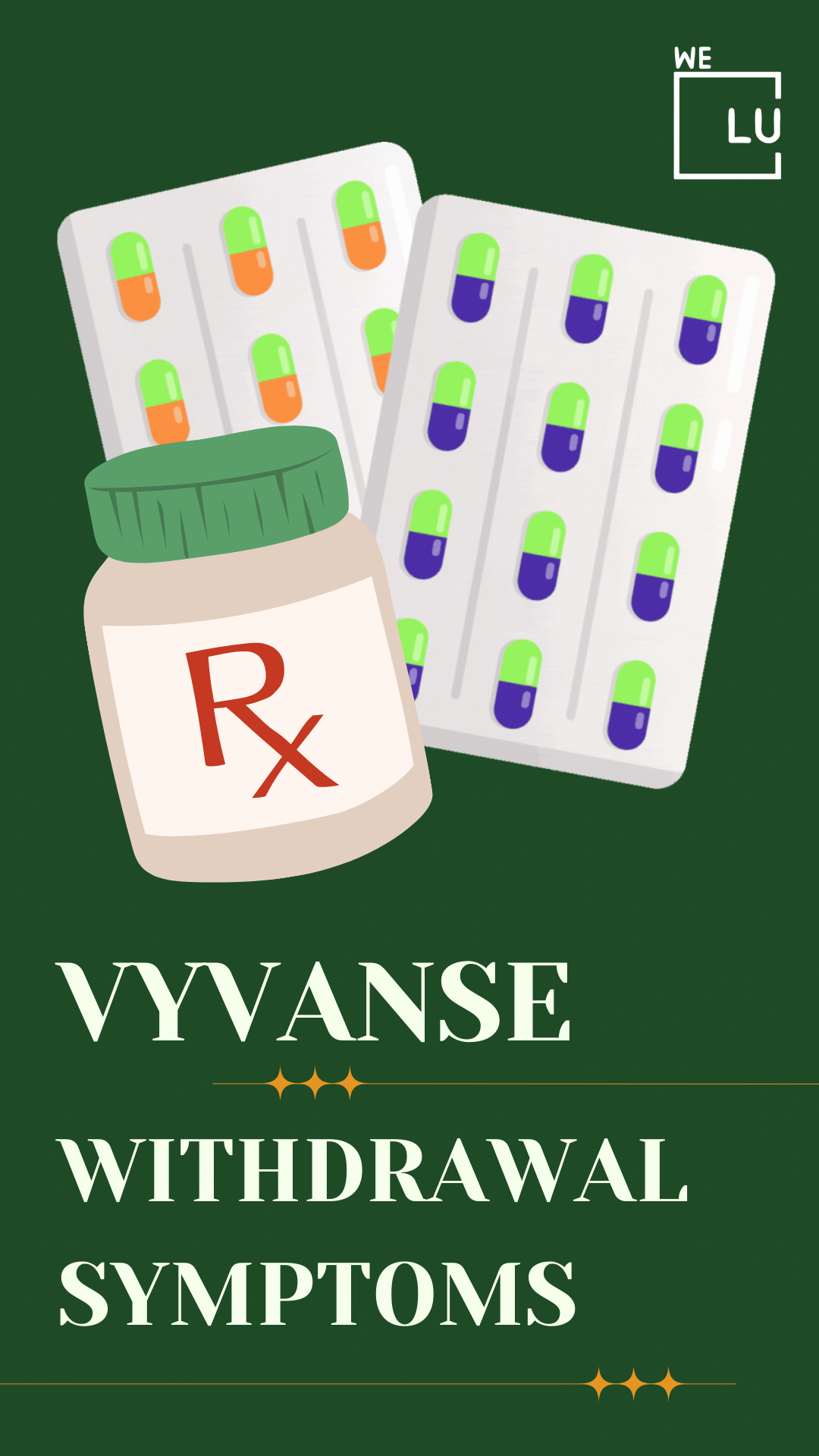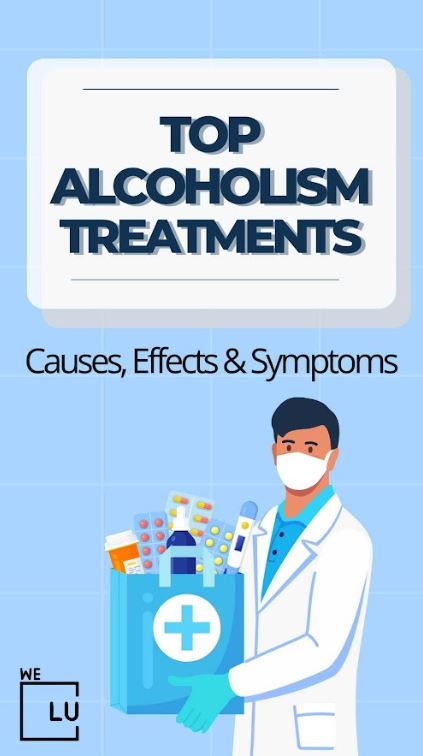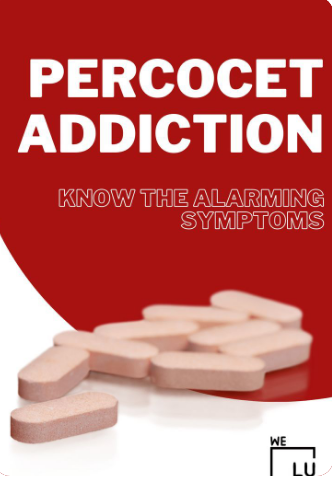How Long Does Molly Last? How Long Does MDNA Last? How Long Does Ecstacy Last?
The effects of Molly, MDMA, or Ecstacy can last up to six hours. Typically, the peak effects are experienced two hours after taking MDMA, and the drug wears off after four hours. The outcomes of MDMA use can vary greatly depending on the individual user and how much of the drug is taken. Some people experience a lasting euphoria after the initial peak. Other short-term effects include increased energy and sociability, emotional openness, and decreased inhibition. However, it is essential to remember that MDMA can also lead to adverse effects, such as anxiety, confusion, paranoia, and muscle tension.
Continue reading to learn how long does Molly last in your system factors.
How Long Does Molly Last In Your System?
Molly is the street name for the drug MDMA, which is a psychoactive substance that is often taken in the form of a pill or capsule.
Generally, Molly stays in a person’s system for several days. Molly enters the bloodstream very quickly after you use it. However, even after its effects wear off, traces of the drug will stay in your system. Molly may remain in your system for up to five days. Since tolerance also increases with use, if you use Molly chronically, it may be detectable in your system for up to a week after your last use. Higher doses may be detectable in your system for longer. Although it’s not one of the five drugs tested by the standard five-panel drug test most employers use, molly can show up on a drug test.
How Long Does Molly Stay in Your Sytem Chart
How long does molly last charts can show several different aspects, including:
- Molly drug test time frame: The amount of time Molly can be detected in your sytem.
- Onset time: The amount of time it takes for the effects of molly to start becoming noticeable.
- Peak effects: The time period during which the effects of molly are at their strongest and most intense.
- Duration: The overall length of time molly’s effects can be felt.
- After-effects: The residual effects that can persist after the primary effects of molly have worn off.
These times can vary based on several factors, including dosage, purity, and individual metabolism. Please remember that using illicit substances is dangerous and can seriously impact physical and mental health.

How long does Molly last in system? Detection times for how long ecstasy lasts in your system:
- Blood: An MDMA (molly) drug test can detect molly in the blood for 1 to 2 days after it’s taken.
- Urine: Ecstasy (molly) can be detected in urine for 2 to 4 days after it’s taken.
- Hair: Like other drugs, molly can be detected in hair follicles for several months.
How it’s used also affects how long molly/MDMA stays in your system and its detection window. The faster it’s absorbed into the bloodstream, the shorter the detection window. For instance, compared to oral ingestion, molly will stay in the body for a shorter time when snorting.
What Is MDMA or Molly?
Most people have heard of the drug ecstasy, also known as MDMA, short for 3,4-methylenedioxymethamphetamine [1], which is grown synthetically in a lab. Ecstasy rose in popularity in nightclubs during the 1980s and 1990s. The pills gave users the euphoric high of amphetamines and the psychedelic effects of hallucinogens. Molly contains MDMA in a crystalline powder contained in a capsule. It’s a concentrated ecstasy, but users don’t always know if it’s “pure.” Like all synthetic drugs, it could be diluted with other psychogenic substances.
Molly is short for “molecule.” Any drug purchased on the street is always subject to being named something different. According to the National Institute for Drug Abuse (NIDA), 11 million Americans have used ecstasy at least once. The drug can be adulterated with other chemicals like bath salts, a relatively new synthetic powder often containing amphetamine-like chemicals.
MDMA is a Schedule I controlled substance. This indicates the Drug Enforcement Administration (DEA) recognizes it as having no medical use and a high potential for misuse or addiction. As a result, it’s illegal to sell, buy, or use any form of MDMA — including molly — in the United States. There are also potent designer cathinone stimulants known by the street name “bath salts,” often marketed as molly. People taking these substitutes have solid cravings and much more violent reactions.
How Is MDMA Used?
Most MDMA users take it as a pill or tablet. However, some inhale the powder or ingest it as a liquid. The widely used nickname Molly, which is shorthand for “molecular,” frequently alludes to the supposedly “pure” crystalline powder form of MDMA, typically supplied in capsules. However, when consumers buy powder, caplets, or tablets marketed as Molly, they frequently end up with other substances like synthetic cathinone (also known as “bath salts”) instead.
Some people combine MDMA use with other substances, such as alcohol or marijuana.
Top 3 How Long Does Molly Last MNDA FAQs
-
How long does MDNA last? How long does MDNA high last?
Mdma generally lasts up to three hours. It usually takes about 30 minutes for the effects to kick in and peak for about two hours. After the peak, the effects will slowly fade and should be gone within three hours.
-
How long does MDNA high last in your system?
MDMA usually has a half-life of about 6-7 hours, meaning it will stay in your system for about 12 to 14 hours after consumption. However, it may take up to 24 hours for the effects of the substance to completely wear off.
-
How long does MDNA last in urine?
MDMA typically remains detectable in urine for up to four days after consumption, but this period can be extended depending on the individual’s metabolism and hydration levels.
Molly Addiction Statistics
According to the National Institute of Drug Abuse, over 15 million people in the US alone are reported to have used MDMA (also known as ecstasy) at least once in their lifetime. Other studies estimate up to 30 million people worldwide have used the drug in the past year.
Nightclubs and festivals are popular places for this drug’s use, especially among young people. For the 2014 Global Drugs Survey, nearly 80,000 young individuals who use drugs globally were polled. In this sample, MDMA was among the top five substances consumed the previous year, with more than 50% of participants claiming to go “clubbing” at least four times annually. More than 20% of respondents from the United States said they had used MDMA in the previous year.
10%
Over ten percent of seniors in high school have used MDMA at least once.
Source: University of
Michigan’s Monitoring the Future
Survey
2.6 million
In 2020, 0.9% (or over 2.6 million) of those 12 and older reported using MDMA (Ecstasy) in the previous 12 months.
Source: NIH
1.1%
A projected 0.6% of eighth-graders, 0.7% of tenth-graders, and 1.1% of twelve-year-olds reported using MDMA in the previous year in 2021.
Source: NIH
How Does MDMA Affect The Brain?
Three brain molecules are activated more by MDMA, which are:
- Dopamine increases activity and energy and reinforces behaviors with the reward system.
- Norepinephrine– elevates blood pressure and heart rate, which are dangerous for those with heart and blood vessel problems.
- Serotonin– influences various functions, including mood, hunger, and sleep. Additionally, it releases chemicals that affect trust and sexual arousal. People who use MDMA likely experience emotional intimacy, improved mood, and empathy because of the significant serotonin release.
Other adverse health impact includes:
- nausea
- muscle cramping
- uncontrollable clenching of the teeth
- blurred vision
- chills
- sweating
Although many users take a second dose as the effects of the first dose start to wear off, the effects of MDMA last for roughly 3 to 6 hours. A person who uses the substance moderately for a week may go through the following:
- irritability
- impulsivity and hostility
- depression
- issues with sleep
- anxiety
- issues with concentration and memory
- decreased appetite
- decreased interest in and pleasure from sex
Some of these symptoms might result from mixing MDMA with other drugs, particularly marijuana.
Molly’s Effects Infographics

Using illicit substances like molly can have unpredictable and potentially dangerous effects on the body and mind. Purity and dose can vary widely, which makes it difficult to estimate the exact effects and duration of molly use.
Some immediate effects of molly use can include euphoria, increased sociability, empathy, and energy. However, as the drug leaves the body, it can lead to feelings of anxiety, depression, exhaustion, and difficulty sleeping. Sometimes, molly use can cause serious and potentially life-threatening complications, such as dehydration, heart problems, seizures, and overdose.
Given the variety of risks associated with molly use, it is important to seek professional medical help if you struggle with drug use. Seeking support from a licensed counselor, psychologist, or medical doctor is an effective way to address substance use issues and take steps toward recovery.
How Long Does Molly Stay In Your Urine
The length of time that MDMA can be detected in the urine depends on various factors, including the dose taken, the individual’s metabolism, and the sensitivity of the drug test being used. So, how long does molly stay in your urine? Continue reading for more on how long does molly stay in your urine.
In general, MDMA can be detected in the urine for 1-4 days after use. However, the drug can be detected for more extended periods in some individuals. For example, heavy users of MDMA may test positive for the drug for up to a week after their last use.
It’s important to note that drug detection times can vary widely, and the above estimates are only general guidelines. The only way to know how long a particular drug will be detectable in an individual’s urine is to test the sample using a drug testing kit.

Get Your Life Back
Find Hope & Recovery. Get Safe Comfortable Detox, Addiction Rehab & Mental Health Dual Diagnosis High-Quality Care at the We Level Up Treatment Centers Network.
Hotline (877) 378-4154Molly/Ecstasy/MDMA PDF
MDNA, or molly, is a drug that has become increasingly popular among young adults in recent years. While many people use molly recreationally for its stimulating effects, it can also have serious side effects if abused or taken in large doses.
How Long Does Molly Stay in Your Urine?
Molly is classified as a Class A drug due to its potential for abuse and addiction, and it can stay in your urine for up to four days after ingestion. This means that if you take molly or MDMA, it could show up on a drug test several days later. Therefore, it is crucial to understand how long molly stays in your system so that you can make informed choices about how and when to use it.
The active ingredient in Molly, MDMA, can generally be detected in urine tests anywhere from 2-5 days after use. However, it can sometimes remain detectable in urine for up to one week after consumption. MDMA can also be detected in hair tests up to 90 days after use. Blood tests may detect MDMA up to 48 hours after use, and saliva tests may detect it within 24 hours. The half-life of MDMA is typically 8 hours, meaning half of the consumed dose will be eliminated from your system within 8 hours.
Overall, MDNA’s influence on music culture has been long-lasting, and its active ingredient, molly, stays in your system for up to four days after ingestion. Therefore, it is vital to understand how long molly stays in your urine if you use the drug to be aware of potential risks and how it will affect future drug tests. With this knowledge, you can enjoy the stimulating effects of molly safely and responsibly.
Get Help. Get Better. Get Your Life Back.
Searching for Accredited Drug & Alcohol Rehab Centers Near You? Or Mental Health Support?
Even if you have failed previously, relapsed, or are in a difficult crisis, we stand ready to support you. Our trusted behavioral health specialists will not give up on you. Call us when you feel ready or want someone to speak to about therapy alternatives to change your life. Even if we cannot assist you, we will lead you wherever you can get support. There is no obligation. Call our hotline today.
FREE Addiction Hotline – Call 24/7Health Effects Of MDMA
MDMA in high amounts can interfere with the body’s capacity to control temperature. This can cause a rise in body temperature, which on rare occasions can cause heart, liver, or renal failure and death.
Additionally, using MDMA, especially with sildenafil (Viagra), may encourage risky sexual conduct since it can foster closeness and trust. People are now more likely to get or spread hepatitis or HIV due to this.
Risks Of MDMA
The possibility of other drugs being present in pills, capsules, or powders marketed as Ecstasy or Molly that are supposed to be “pure” adds to the dangers of MDMA. Coke, ketamine, methamphetamine, over-the-counter cough medicine, and synthetic cathinone are among the additions found in Molly’s contraband that police have confiscated (“bath salts”). If a person does not know what they are taking, these substances may be dangerous. Together with MDMA, they could be harmful. People who intentionally or accidentally mix this substance with others, such as alcohol and marijuana, may increase their risk for adverse health effects.

How Long Does Molly Effects Last?
The main effects of Molly last around 3 hours, and minor effects last about 7 hours – assuming your substance contains pure MDMA.
If a new user takes Molly on an empty or mostly empty stomach, you should notice the Molly kick in around 1 hour after ingestion. Experienced users familiar with the effects may see it kick in after as little as 30 minutes.
The primary effects of Molly last for about 3 hours, generally from hours 1 to 4 after ingestion. You will likely feel some effects for about 7 hours, from roughly 30 minutes after ingestion until around 7-8 hours after ingestion.
A substantial portion of Molly/Ecstasy sold as MDMA isn’t MDMA, and so if you’re experiencing different timing than described here, you may not have real MDMA
Over the week following moderate use of the drug, a person may experience the following:
- Irritability
- Impulsiveness and aggression
- Depression
- Sleep problems
- Anxiety
- Memory and attention problems
- Decreased appetite
- Decreased interest in and pleasure from sex
Some of these effects may be due to the combined use of MDMA with other drugs, especially marijuana.
Top 4 How Long Does Ecstasy Last FAQs
-
How long does ecstasy last?
Typically, the effects of ecstasy last anywhere from 3 to 6 hours. The intensity of the effects can vary from person to person, depending on factors such as weight, tolerance, and the amount of drug taken.
-
How long does ecstasy high last?
The high from ecstasy typically lasts from 3 to 6 hours. However, it can depend on factors such as body weight, tolerance, and the amount of the drug taken.
-
How long does ecstasy last in your system?
The effects of ecstasy typically last up to 24 hours in the body, but the drug can stay in the system for up to three days. The time it stays in your system depends on factors such as metabolism, body weight, and the amount ingested.
-
How long does molly stay in your urine?
Generally, a urine test can detect traces of molly (MDMA) in your system for up to four days. However, the results of a urine test are highly variable, as they can depend on factors such as body composition, metabolism, and how much fluids you drink.
Factors That Affect How Long Molly Is In Your System
Plenty of other factors can also influence how long molly stays in your system, including how much of it is taken, how often it’s taken, and the individual’s metabolism.
- Dosage and frequency of use: When taken in larger doses or multiple doses over time, MDMA can last longer in the body. Similarly, first-time users may have a shorter detection window for ecstasy than long-time users.
- Body type: Many drugs tend to build up in fatty tissue, meaning that people with a high body mass index (BMI) or more body fat may take longer to eliminate the drug from their systems.
- Metabolism: A person’s metabolism can be affected by age, level of physical activity, and other health conditions. The higher the metabolism, the shorter the detection window for ecstasy.
- Other health concerns: Other underlying health conditions, such as liver and kidney disease, can also impact how quickly a person metabolizes MDMA. Because these two organs are mainly responsible for flushing toxins out of the body, a person with conditions in these areas may struggle to metabolize molly.
Comfortable Facilities & Amenities
High-Quality Addiction & Mental Health Rehabilitation Treatment
Rehab Centers TourRenowned Addiction Centers. Serene Private Facilities. Inpatient rehab programs vary.
Addiction Helpline (877) 378-4154Proven recovery success experience, backed by a Team w/ History of:
15+
Years of Unified Experience
100s
5-Star Reviews Across Our Centers
10K
Recovery Success Stories Across Our Network
- Low Patient to Therapist Ratio
- Onsite Medical Detox Center
- Comprehensive Dual-Diagnosis Treatment
- Complimentary Family & Alumni Programs
- Coaching, Recovery & Personal Development Events
Is MDMA Addictive?
According to various studies, MDMA may be addictive. Animals will self-administer MDMA in experiments, but less frequently than with other drugs like cocaine, which is a crucial sign of a drug’s misuse potential.
Some people describe withdrawal symptoms like those listed below:
- fatigue
- appetite loss
- depression
- difficulty focusing
MDMA Therapy
In the 1970s, MDMA was first utilized as a tool in psychotherapy (mental disorder treatment using “talk therapy”). The medication lacked support from human studies (clinical trials) and US Food and Drug Administration approval (FDA). The United States Drug Enforcement Administration (DEA) classified MDMA as an illicit substance without a valid medical justification in 1985. However, when administered to patients under precisely controlled circumstances, several researchers are nonetheless intrigued by its potential in psychotherapy. Clinical trials are currently being conducted on MDMA as a potential treatment for PTSD, anxiety in terminally ill patients, and social anxiety in adults with autism. MDMA-assisted psychotherapy for PTSD recently received the FDA’s Breakthrough Therapy designation.
Molly Withdrawal
Molly is exceptionally psychologically addictive, and those addicted to molly will experience withdrawal when they quit using the drug. Withdrawal happens because the user’s brain becomes dependent on ecstasy to function.
Taking molly increases the activity of neurotransmitters—specifically those that influence feelings of happiness and love—in the brain. This causes the euphoric high and positive emotions associated with using molly. However, this increase in activity also quickly depletes the brain’s supply of the chemicals needed to feel this way.
After prolonged use, the user’s brain can depend on molly to function and experience these positive feelings. When someone quits taking the drug, they’ll go through withdrawal as their brain tries to relearn how to operate properly without it. During withdrawal, users typically experience the opposite of what they felt while high, like depression and anxiety, and they’ll also intensely crave the drug.
The symptoms of molly withdrawal tend to be primarily psychological, but some users also experience physical effects. The symptoms and duration of withdrawal vary by person. Some of the things that affect the withdrawal process include:
- Tolerance
- The frequency and duration of drug use
- Metabolism and overall health
- Age
- Gender
- Genetics
A user with multiple addictions may also have a more intense and complicated withdrawal, and a user with co-occurring mental health disorders may also experience additional challenges.
Molly Withdrawal Symptoms
Withdrawal from molly can produce severe psychological symptoms. Some users may experience physical discomfort. However, the physical effects are typically mild and not life-threatening. Molly’s withdrawal symptoms may include the following:
- Depression
- Confusion
- Anxiety
- Cravings
- Agitation
- Paranoia
- Insomnia
- Fatigue
- Difficulty concentrating
- Loss of appetite
- Memory problems
- Changes in self-perception
Molly is often cut with other drugs, such as heroin, ketamine, amphetamines, and other illicit drugs. In many cases, molly is also taken alongside other drugs, such as cocaine or LSD. Because it’s hard to know what’s in an ecstasy pill and so many users tend to combine it with other drugs, withdrawal symptoms are often different for each person.
Relapse during the molly withdrawal is especially dangerous because the user’s tolerance has decreased. If they jump back into using the same amount of molly, they’re at an increased risk of overdose—which can be fatal.
Managing the symptoms of withdrawal from molly—especially the feelings of depression, which are often severe—can be complicated for a person to do on their own. It is recommended that users complete the withdrawal process in a medical detox facility or an inpatient rehab.
World-class, Accredited, 5-Star Reviewed, Effective Addiction & Mental Health Programs. Complete Behavioral Health Inpatient Rehab, Detox plus Co-occuring Disorders Therapy.
CALL (877) 378-4154End the Addiction Pain. End the Emotional Rollercoaster. Get Your Life Back. Start Drug, Alcohol & Dual Diagnosis Mental Health Treatment Now. Get Free No-obligation Guidance by Substance Abuse Specialists Who Understand Addiction & Mental Health Recovery & Know How to Help.
10 Most Popular Molly FAQs
-
How Long Does A Molly High Last?
If you are wondering, “how long does molly high last? or how long does a molly trip last”, the answer is that an average Molly high lasts between three and six hours.
-
How Long Does Molly Last For?
If you are wondering, “how long does molly trip last? or how long does a molly comedown last?” the answer is that it often lingers in a person’s body for several days. The particular period varies on several variables, including the individual’s metabolism and the dosage of the drug they have consumed.
-
How Long Does Molly Withdrawal Last?
If you are wondering, “how long does molly come down last? or how long does molly comedown last?”, the answer is due to the many variables involved in tapering off MDMA, it can be challenging to determine a precise timeline for molly withdrawal. The use of other drugs can significantly influence the intensity and duration of withdrawal symptoms. Other influences include usage period, dose consumed, any impurities in the marijuana, and any underlying medical or mental health conditions.
-
How Long Does A Molly Hangover Last?
If you are wondering, “how long does the effects of molly last?” the answer is that for most people, the drug will be sufficiently digested, and the effects will have started to wear off within 10 to 24 hours. The person will gradually feel better quickly as the neurotransmitter depletion reverses.
-
How Long Does Molly Depression Last?
A person’s serotonin levels may sharply decline during a comedown. Depression and thoughts of suicide may develop due to this abrupt decline. In particular, for people with a history of depression or other mental health disorders, MDMA dependence may eventually result in long-term abnormalities in brain chemistry. Additionally, MDMA users who concurrently use alcohol, marijuana, or any other drugs may be more susceptible to developing depression after use.
-
How Long Does Molly Last In Urine?
Up to three days after administration, Molly remains in urine. When MDMA enters the bloodstream, it is transported to the liver, where it is metabolized and eliminated. A half-hour after consuming molly, if you take a big dose, it can show up in your urine.
-
How long does molly last In your system for men vs women?
The duration of MDMA in the system does not differ significantly between men and women. Generally, the half-life of MDMA is about 9 hours for both men and women. However, due to the significant variability in body composition, weight, and metabolism, the duration can differ from person to person.
-
How long does molly last In your system adults vs teens?
In adults, the half-life of molly (MDMA) is about 9 hours, and it is similar for both adults and teens. However, the duration may vary from person to person due to differences in body composition, weight, and metabolism.
Thus, the age-based slower metabolism of older adults will likely account for a longer response time to how long molly lasts in your system.
-
How long does molly last In your system in combination with alcohol?
When molly is combined with alcohol, its effects do not last as long due to the faster metabolization of alcohol. Generally, the effects of molly will last for about 4 to 8 hours in combination with alcohol.
-
How long does molly last In your system in combination with other drugs?
The length that molly will last in combination with other drugs will depend on the type of drug and its metabolism. However, it is generally safe to assume that the effects of molly will last for approximately 4 to 8 hours.
Molly Addiction Treatment
How long does molly last In your system, and is addiction treatment required for heavy abuse of MDMA? Molly typically remains in the system for up to 72 hours, depending on one’s metabolism. In terms of addiction treatment, the length of time for molly to be eliminated from the body can vary greatly depending on how long one has been using and the severity of the addiction.
Medical detox offers the safest and most effective means of withdrawal. It provides a stable and secure environment where molly can process out of the body while helping the individual reach a physical and psychological level of stability before continuing treatment.
Withdrawal from molly is not typically considered as physically life-threatening as withdrawal from other drugs and alcohol may be. However, this is not to say that the side effects may not be intense and significant. Anxiety, insomnia, and depression can be tricky, and a medical detox program can help manage these ecstasy withdrawal symptoms.
In a medical detox program, individuals are admitted to a specialized facility that provides medical and mental healthcare and supervision 24 hours a day, seven days a week. The environment is calm and secure, and individuals are encouraged and supported around the clock. Relapse and cravings can be minimized through supportive care and therapeutic methods.
Currently, no specific medications are approved to treat molly dependence or withdrawal. However, different pharmacological tools may help manage specific symptoms. For instance, sleep aids may help combat insomnia, which can be essential as a healthy amount of sleep enhances healing. Similarly, antidepressant medications may help to replenish serotonin and dopamine levels to manage depression and anxiety.
Individuals who have abused ecstasy on a long-term basis often suffer from lost appetite, malnutrition, and even possible weight loss or anorexia. Nutritional deficits can be rectified via regular, healthy, and balanced meals in a professional detox program.
Dehydration can result from ecstasy abuse, which can be addressed with increased fluids during detox. When a person is well-rested and nutritionally balanced, they can think clearly and make better decisions; thus, they are better equipped to avoid relapse.
Medical detox programs generally last 5-7 days. While they are an essential component of recovery, further treatment is needed. Ideally, clients progress directly from medical detox into a comprehensive addiction treatment program.
How long does Molly last in the human body, and what are the after-effects of using Molly are questions that many misusers may have. If you feel that you may have developed a substance use disorder involving Molly/Ecstasy/MMDA, help is available. Contact We Level Up to learn more about addiction treatment today.

Experience Transformative Recovery at the We Level Up Treatment Center.
See our authentic success stories. Get inspired. Get the help you deserve.



Start a New Life
Begin with a free call to an addiction & behavioral health treatment advisor. Learn more about our dual-diagnosis programs. The We Level Up treatment center network delivers various recovery programs at each treatment facility. Call to learn more.
- Personalized Care
- Caring Accountable Staff
- Comfortable Amenities
- Licensed & Accredited
- Renowned w/ 5-Star Reviews
We’ll Call You
Search We Level Up How Long Does Molly Last & Other Resources
Sources
[1] NIDA – https://nida.nih.gov/publications/drugfacts/mdma-ecstasymolly[2] DEA – https://www.dea.gov/factsheets/ecstasy-or-mdma-also-known-molly. Learn how long does molly last?
[2] DEA – https://www.dea.gov/factsheets/ecstasy-or-mdma-also-known-molly. Background on how long does molly last.
National Institute on Drug Abuse. (2018). MDMA/Ecstasy (Molly). Facts on how long does molly last.
Scientific American. (n.d.). What are the effects of the drug Ecstasy? And how long does molly last under long-term use.
Kim, J., Fan, B., Liu, X., Kerner, N., & Wu, P. (2011). Ecstasy use and suicidal behavior among adolescents: findings from a national survey. Suicide & life-threatening behavior, 41(4), 435–444. Effects and how long does molly last.





